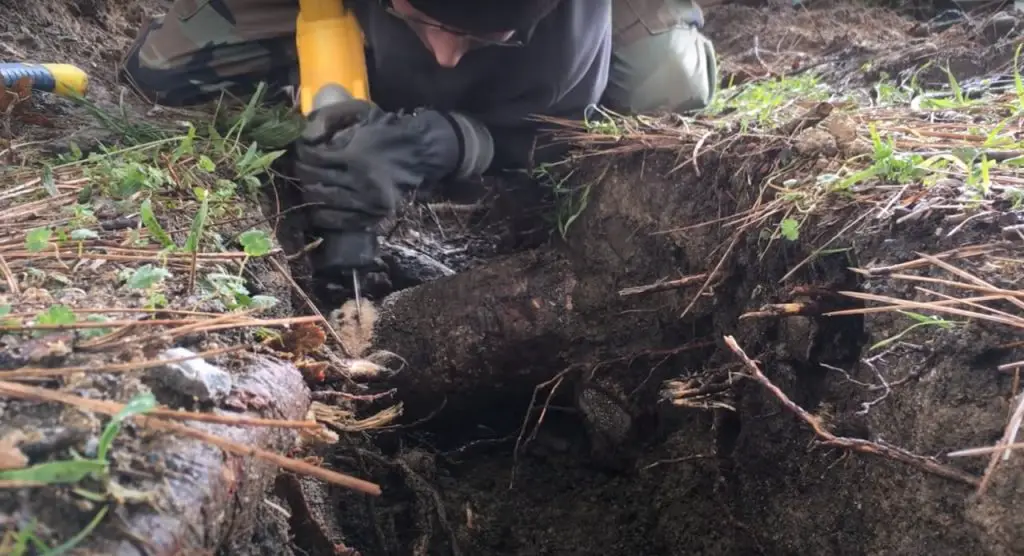If you’ve ever tried to remove a tree stump, you know that it’s not an easy task. The roots can be particularly stubborn, requiring significant effort and time to remove. While many people opt for a manual approach, such as digging or chopping, some may wonder if a reciprocating saw can be used to speed up the process. In this blog post, we’ll explore the question “Can you use a reciprocating saw to cut tree roots?” We’ll examine the pros and cons of using a reciprocating saw, discuss the best types of blades to use, and offer some tips for safe and effective use. Whether you’re a homeowner looking to remove a pesky stump or a professional landscaper in search of new tools, this post will provide valuable insights into the use of reciprocating saws for cutting tree roots.
How to Cut Tree Roots with a Reciprocating Saw
A reciprocating saw is a versatile tool that can be used for a variety of tasks, including cutting tree roots. While it may seem like a logical choice for this job, there are some things you should know before using a reciprocating saw to cut tree roots. First, the blade of a reciprocating saw is designed to move in a forward and backward motion, which means it can easily get stuck in the root system of a tree.
Second, the teeth on the blade are not as sharp as those on a traditional tree-cutting saw, so it will take longer to make the cut. And finally, because the blade is moving so rapidly, there is a greater risk of kickback when using a reciprocating saw to cut tree roots.
- Use a reciprocating saw to cut through the tree roots.
- Be sure to use the correct blade for the material you’re cutting.
- Cut through the roots slowly and carefully, being careful not to damage the surrounding area.
- If necessary, use a second person to help guide and support the roots as you’re cutting them.

What is a Reciprocating Saw
A reciprocating saw is a type of power tool that uses a reciprocating motion to cut through materials. It is typically used for demolition work or for cutting through pipes and other hard-to-reach places. The blade of a reciprocating saw is attached to a piston that moves back and forth, allowing it to cut through the material. Reciprocating saws are available in both corded and cordless models.
How Does a Reciprocating Saw Work
A reciprocating saw also called a recip saw or Sawzall, is a type of power tool that is commonly used for demolition work and other tasks that require cutting through tough materials. The reciprocating saw gets its name from the back-and-forth motion of the blade, which allows it to quickly cut through wood, metal, and other materials. The reciprocating saw typically has a long, narrow blade that is attached to an armature (the part of the tool that holds the motor) with a clamp.
The armature is connected to a trigger mechanism, which activates the motor when you squeeze it. The motor then drives the blade in a rapid reciprocating motion. Most reciprocating saws have variable speed settings, so you can adjust the speed of the blade depending on what material you’re cutting.
Some also have adjustable blades, so you can change the angle of attack depending on what you’re trying to cut through.
What are the Benefits of Using a Reciprocating Saw
If you’re looking for a versatile power tool that can help you tackle a wide range of projects, then you should consider investing in a reciprocating saw. Also known as a recip saw or Sawzall, this type of saw is designed for making quick, aggressive cuts through materials like wood, metal, and plastic. One of the biggest benefits of using a reciprocating saw is that it can save you time and effort compared to other types of saws.
For example, if you need to make a large cut in a piece of plywood, you could use a circular saw; however, it would take significantly longer than if you used a recip saw. Another benefit is that recip saws are relatively easy to use even for beginners. While there’s definitely a learning curve involved with any power tool, most people can get the hang of operating a recip saw after just a few minutes of practice.
Plus, since they’re so versatile, they can be used for all sorts of different projects around the home or workshop. Finally, one last advantage worth mentioning is that reciprocating saws tend to be very affordable – especially when compared to other power tools like table or miter saws. Whether you’re on a tight budget or simply want to get the most bang for your buck, opting for a recip saw is always a smart move.

Is It Safe to Use a Reciprocating Saw on Tree Roots
Yes, a reciprocating saw can be used to cut tree roots. However, it’s important to use the appropriate blade for the job. A bi-metal or carbide-tipped blade with large teeth designed for cutting wood and nails would be ideal for cutting through tree roots. It’s also important to exercise caution when using the saw, as the blade can easily get stuck or kick back if it encounters hard or dense roots. Always wear appropriate safety gear and use the saw with care. Additionally, it’s worth noting that if the roots you are trying to cut are particularly large or thick, a reciprocating saw may not be powerful enough to get the job done and other tools such as a chainsaw or an axe may be necessary.
What are Some Tips for Safely Using a Reciprocating Saw on Tree Roots
When using a reciprocating saw on tree roots, always wear proper safety gear including gloves, eye protection, and earplugs. Make sure the saw is properly lubricated before use. Start the saw at a low speed to avoid kicking up dirt and debris.
Keep the blade perpendicular to the ground to prevent it from getting stuck in the root. Use caution when cutting through large roots as they can be unpredictable. If the saw gets stuck, turn it off and carefully remove it from the root.
Removing a Tree Stump with Reciprocating Saw
Conclusion
While a reciprocating saw can technically be used to cut tree roots, it is not the ideal tool for the job. A Chainsaw is a much better option because it is specifically designed to cut through thick, woody materials like tree roots.

I’m John Carry, also known as a woodworker I have been a professional saw expert for over 10 years. I’d work with every type of saw machine out there, and experiment to find which tools work better.
I’m always looking for ways to improve my skills and help those around me. I love my job and am always happy to share my knowledge with others.



